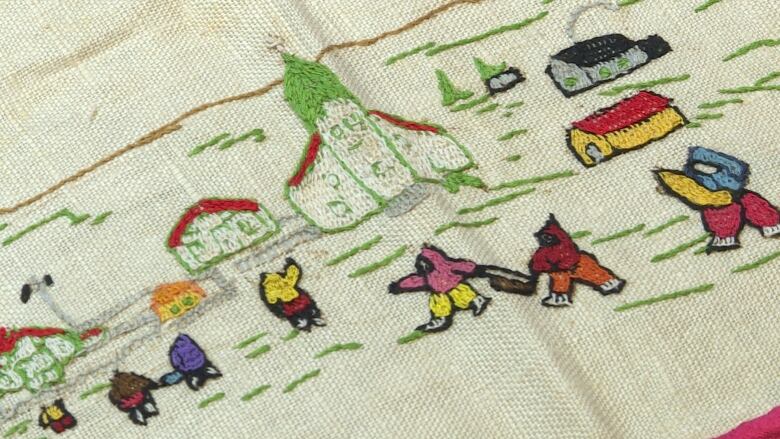U.S. museum touring Inuit embroideries in Labrador, looking for info
The embroideries were crafted between 1940 and 1970 by Labrador Inuit

Scholars from a U.S. museum arein Labrador to find out more information about the origins of some rare embroideries in their collection.
"We really know very little about the actual production of the embroideries," museum director Susan Kaplan, director of the Peary-MacMillan Arctic Museum at Bowdoin College in Maine,told CBC.
The 92 works of art werecrafted by Labrador Inuit between 1940 and 1970 and bequeathed to the museum by Donald MacMillan and his wife, who were frequent visitors to Labrador's north coast communities.

"We don't know if each embroidery represents the work of an individual or perhaps groups of people. Perhaps a sewing circle worked on them," Kaplan said.
Unraveling the history
The museum held a public session in Happy Valley Goose Bay on Friday and will be holding more inNain, Hopedale and Makkovik over the next couple of weeks.
"We have a sense that people are really excited that we are bringing the embroideries rather than just photographs," Kaplan said.
"People would go up to the projector and try to touch the embroideries and get really close to see the stitching," said Katie Donlan, curatorial internat the museum.
"People need to be able to look closely. They need to be able to, in some cases, handle the embroideries, turn them over to get a sense."

The meetings are also to find out what the communities would like to see happen with the artwork.
"What we want to do is basically document the history of these embroideries from the perspective of the Inuit communities," Kaplan said.
"So how that documentation ends up manifesting itself is going to be something we talk to them about."












_(720p).jpg)


 OFFICIAL HD MUSIC VIDEO.jpg)
.jpg)



























































































